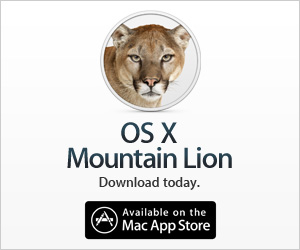iPhone 5
 iPhone 5
Apple's event has just concluded. This is what was announced.
Links are up on Apple's website:
Promo Video
iPhone 5
Apple's event has just concluded. This is what was announced.
Links are up on Apple's website:
Promo Video
Features Highlights
Features the following:
* 7.6mm thin, 18% thinner
* 112 grams, 20% lighter (the iPhone 4S weighed 140 grams by comparison)
* Taller screen, 1136 x 640 pixels. Increased from a 3.5 inch to a 4 inch display. Room enough to fit another row of icons and have apps and movie be "wide screen" when rotated on it's side.
* The screen itself has 44% more color saturation, as it is now a true sRGB screen. The touch sensor is built directly into the screen now instead of resting behind it. This means the phone was able to be more compact.
* True 4G/LTE networking on Spring, AT&T and Verizon.
* Faster Wifi. Dual-band 5GHz 802.11 a/b/g/n 802.11n in both 2.4GHz and 5GHz. Wifi speeds now up to 150 Mbps
* New A6 CPU. 2x faster processor. 2x faster graphics.
* Matched or exceeds the battery life of the iPhone 4S depending on how you use your phone. On the low end, 3G talking, or 3G/LTE web browsing can expect 8 hours of battery. On standby 225 hours. Video & wifi browsing can expect 10 hours. Music playing can go for 40 hours.
* Camera is better. Still an 8 megapixel sensor with resolution up to 3264 x 2448. Backside illumination. Hybrid IR filter. Five-element lens. f/2.4 aperture. New dynamic low light mode.
* With the new CPU it takes photos 40% faster.
* New photo feature: Panoramic photos. Hit a single button and rotate your phone through the air. Automatically builds a panorama for you. (Looked kickass in the demo).
* Video: 1080p HD, Improved video stabilization, Face detection, Take photos while recording
* You can now do FaceTime over your cellular network as well (used to be Wifi only).
* Audio improved: 3 microphones. Front, back & bottom. Speakers have 5 magnet transducers (old ones had 3). Earpiece now includes noise canceling on your own audio out.
* Wideband audio: Fills up more frequency spectrum to make call audio sound better.
* New dock connector called "Lightning". All-digital, 8 signal design. It is reversible (able to be inserted up or down). Improved durability.
* They are selling an adapter that you can buy to make your old accessories work with it until you have a chance to replace them all.
* iOS 6: I won't rehash the details here as they were already covered at the June WWDC event. But the iPhone 5 ships with the new iOS version too.
* iOS 6 gets released to existing iPad and iPhone users to download, for free on September 19.
Now for sales options & info:
* Two colors, White & Black. The black is ALL black, even the edges. The white has a brushed aluminum edge.
* iPhone 5 comes in 3 sizes, 16GB, 32GB and 64GB (same as the iPhone 4S)
* Three pries, $199, $299, and $399 (same as every iPhone - nothing changes year to year).
* Pre-orders start September 14th (Friday) and it ships to customers on September 21st (next Friday). Customers can also line up at stores on Sept 21 as well.
In addition to the iPhone announcements, Apple had a big music related announcement:
New version of iTunes coming out that is deeply integrated with iCloud. Completely redesigned the interface of the application (finally!). Easier to browse your music & other content now. The new iTunes version will come out in late October.
Other announcements:
iPod shuffle: $49, 2GB
New iPad nano:
* Small iPod with a tiny color touch screen.
* 5.4 mm thick.
* 2.5" screen
* It has Music, Video, Fitness, Podcasts, Photos and Radio as its apps.
* Comes in 7 colors: Silver, Black, Purple, Green, Blue, Lime, and Red.
* FM tuner integrated.
* Widescreen video
* Built-in pedometer for working out.
* Bluetooth
* Uses the new Lightning connector.
* 30 hours of music playback on a single charge
* $149 price, 16GB
New iPod touch:
* 6.1 mm thin
* 88 grams
* Same 4" Retina display from the iPhone 5.
* Will get the A5 chip (same processor as the iPhone 4S)
* 40 hours of music playback, about 8 hours of video
* 5 megapixel camera, hybrid IR filter, five-element lens, f/2.4 aperture
* Bluetooth 4.0 with LE,
* 802.11 a/b/g/n
* 802.11n 2.4Ghz and 5Ghz
* Up to 150 Mbps
* AirPlay mirroring
* Gains support for Siri.
* 5 colors
* Support for a "loop". Attachable wristband for kids.
* $299 32GB, $399 64GB (Colors)
New earbuds, called "EarPods":
* They made 3D scans of hundreds of ears to come up with a new design.
* New noise canceling technology.
* Should be more comfortable.
* Better microphone


